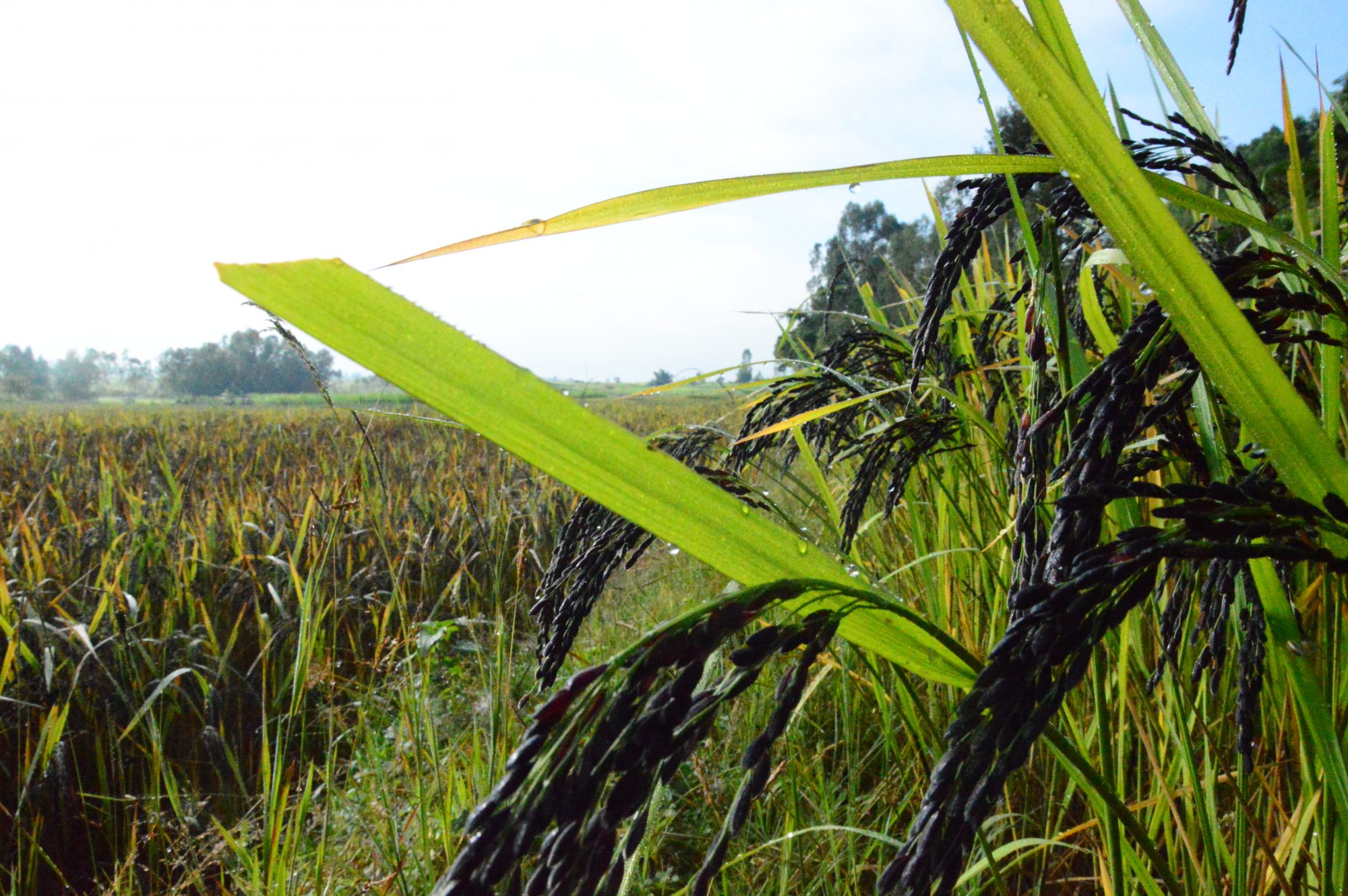For the last thirty years, I could be sure that whenever I visited my parents’ hometown in Manipur, everything would (more or less) be the same as before. The same large potholes on the road, never mended, and no signs of any new restaurants or businesses in the markets. Year after year, our family trip would take us down the same dusty road from the airport in the city of Imphal to our native town of Churachandpur in the foothills; year after year, we would first stop off for vegetables in Bishnupur, at one of the oldest Ima Keithels—markets run by women—and then for snacks in Moirang. It was always the same.
When I made a trip this year, however, some things were different. For one thing, Ima Keithel now had a sign declaring it to be sponsored by Dalmia Cement. For another, the local groceries, or kirana, were now stocked with aesthetically well-packaged processed foods made out of locally-sourced ingredients. But what blew me away was discovering “Chapham doughnuts,” a dark brown-ish doughnut made from “black rice.”
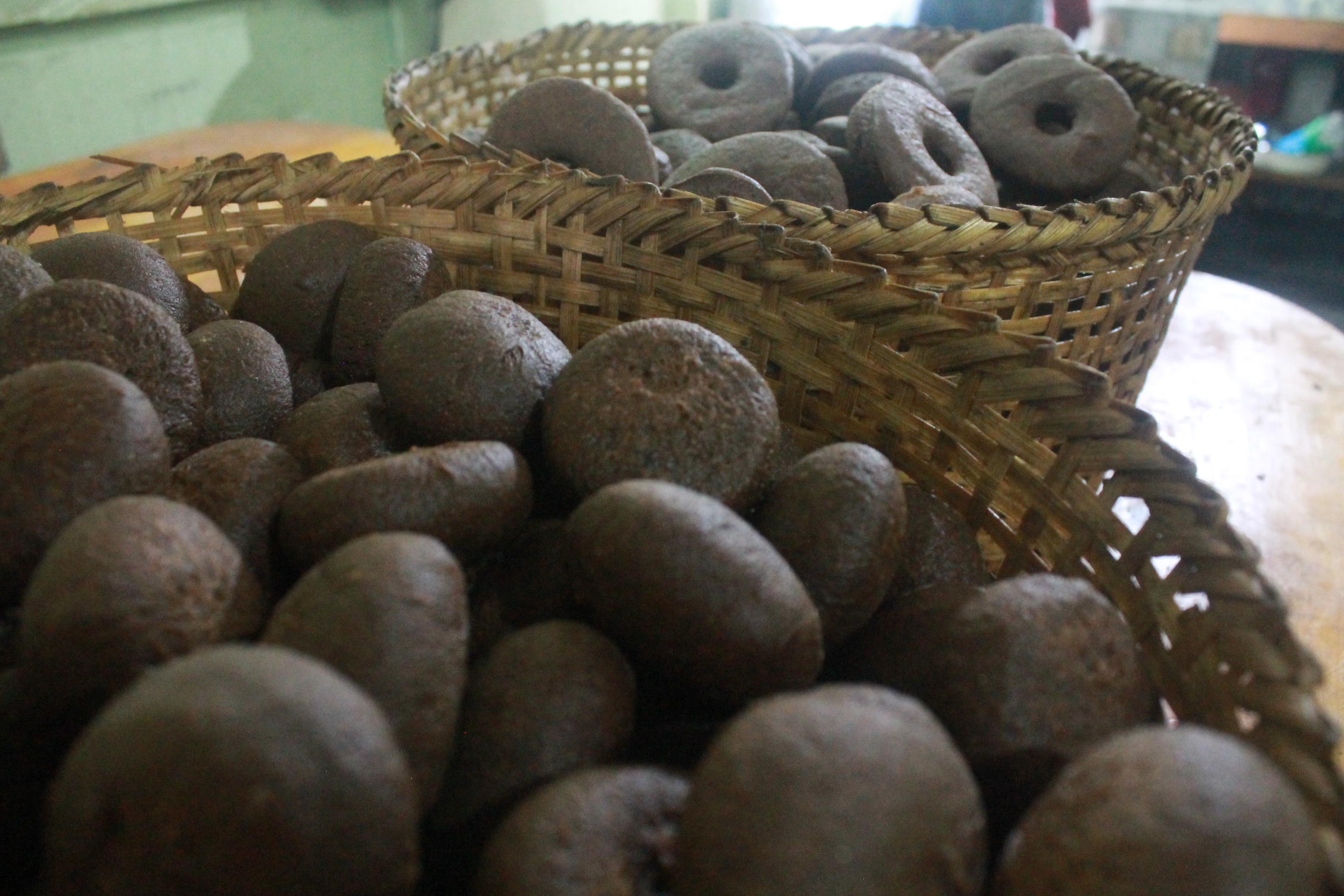
Black rice—or Chak-hao, meaning “delicious rice”—is the new kid on the block in the “superfood” fad. Though doctors have criticized the term as nutritionally meaningless, the marketing category can have dramatic economic effects. Take the South American grain quinoa: after it was added to the unofficial list alongside the likes of blueberries, beetroot, cocoa, and salmon, its price has tripled on global market over the last decade or so, having a dramatic economic effect on the communities in Bolivia and Peru where the grain is cultivated.
Something similar is happening with black rice, which had (famously) been forbidden during the Ming dynasty to anyone but the Chinese emperor; after having been used to brew rice beer and wine in Manipur for the longest time, it is now becoming hipster. And though it first hit the American supermarket shelves courtesy of Lotus Foods in 1995, it’s still a relative latecomer to the party compared to superfoods like quinoa or chia seeds. But today, it’s having its moment; in the wake of a 2010 study touting it as a superfood to rival the blueberry (and the popularity of gluten-free diets), you can read any number of articles explaining the health benefits of “Forbidden rice, or black rice” and “Black rice, aka forbidden rice,” as well as thousands of images on Instagram.
In articles like these, you can learn that the dark purplish-black color of black rice comes from its copious anthocyanins, the same kind of anti-inflammatory, antioxidant flavonoids that give other dark-colored foods their pigment; as with blueberries, eggplants, grapes, plums, and beets, these anthocyanins are supposed to protect against carcinogens and even health disease. The rice’s nutty, mildly sweet taste also gives it an edge on brown or white rice.
You can already see that change in Manipur, where products like Chapham doughnuts indicate a new supply chain in the making (as well as the gusto with which Manipur’s young entrepreneurs are tapping local goodness for outside markets and new e-commerce platforms). Along with more long-running export commodities like “King Chilli,” bamboo shoots, and dried meat pickles, black rice holds out the promise to put this tiny state in the global map.
Of course, like the Andean highlands—whose quinoa only recently began showing up in global supermarkets—Manipur’s history did not begin with black rice. A “princely state” during the days of the Raj—at the far eastern edge of the British empire—Manipur had existed for at least a thousand years as the kingdom of Kangleipak, largely self-sufficient and with its own script and unifying culture; after independence, however, due in part to its strategic location in the North Eastern region—with a 247-mile long border with Burma—Manipur was strong-armed by the government into joining the Indian Union. Since then, Manipur’s fifty-year story has been one of continuous conflict between the Indian armed forces and a cocktail of secessionist insurgent groups demanding independence. These groups never declared their allegiance to India in the first place, of course, but the Indian government sees them as home-grown terrorists, and uses the “Disturbed Areas” label to avoid calling it an active conflict, thereby justifying the use of unconstitutional Armed Forces Special Powers Act (AFSPA) 1958, under which the military forces stationed in the region enjoy broad sweeping powers to arrest, or even shoot to kill, on no more than suspicion of militancy.
Unsurprisingly, the state’s development and autonomy has suffered; curfews, internet shutdowns, and gun violence have been a routine part of people’s lives here. But in the last few years insurgency-related incidents in Manipur have dropped dramatically. And although the Bhartiya Janata Party-led government has mostly been old wine in new bottles when it comes to Manipur, it has invested in development through the “Act East” policy, a BJP spin-off of the opposition Congress’s “Look East” policy: in 2018, Chief Minister Biren Singh awarded 20 lakhs—roughly $28,000—each to 30 entrepreneurs for building and scaling a start-up under BJP’s flagship program “Start Up India.”
One of these entrepreneurs, Paonam Sheetaljit Singh, is the man behind Chapham doughnuts and an increasing range of processed foods made out of black rice. A first-generation business owner, the 31-year-old Sheetaljit runs a home operation manufacturing spices and snacks. The idea to replace flour with black rice first struck him while learning baking in a skill-building course on food processing, and after he began baking with black rice in January, he launched his product in local markets a few months later. The government start-up fund will enable him to scale up his production and export to the rest of the country.
“I started small,” he told me from his home operation in Imphal; “making about one or two kilos of doughnuts and selling it in the local market. Initially, I had to go door to door in all the markets to explain what my product was all about, since doughnuts are not par for the course here.” But in the last few months “the demand has increased so much that I now make 30-35 kilos every day.”
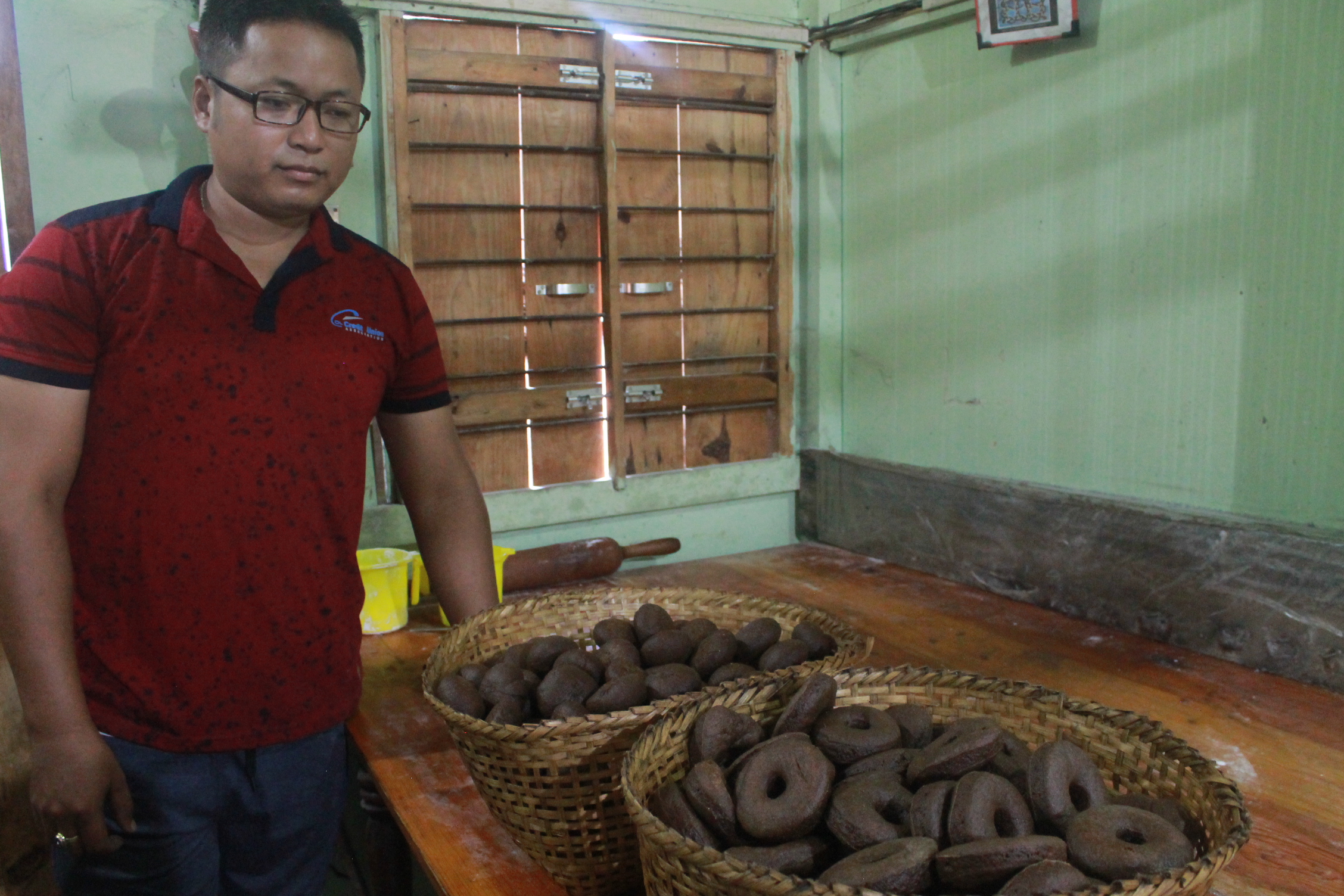
As of now, he only produces deep-fried products—Bhujia, Khurmani, Laddoo, Khajoor, dry cake, and Kimball—not baked. There’s no secret recipe to his products, he says, but the trick is in the proportions used and in the labor-intensive process of kneading the dough before it goes into the frying pan. After that, they are allowed to cool down in a manually temperature-controlled room, and then packaged.
Despite his limited space and equipment, Sheetaljit more than compensates with his ambition; he plans to invest the fund in buying equipment—like an oven—and a bigger space for production, as well as better packaging for his products. Local taste buds remain mostly rooted to traditional meals, so entrepreneurs like Sheetaljit see more potential for his products in the larger Indian subcontinent: “Once I have my infrastructure in place to ensure steady supply,” he says, “I am looking to cater to international markets for my Bhujia and dry cake, which have a longer shelf life.”
Nightlife and 24/7 electricity have become more regular in recent years, but some aspects of life in Manipur have not drastically changed. Along with state-imposed curfews and military crackdowns, bandh protests are still common, a form of general-strike protest declared by one or another ethnic community or civil society groups in the state, often including blockades and street barricades aimed at shutting down economic activity. Manipur is severely underrepresented in the national capital, so local groups resort to bandh-style protests as often as five days a month, sometimes.
“I always have to keep a look out for the news,” he told me; “Curfews take a direct hit on transport and trade, and with a perishable product like mine, I end up running into severe losses.”
Much of the new energy behind black rice is due to the government’s aggressive promoting of the crop. Under the central ministries of Agriculture and Development of North East Region, several new government bodies have been set up to grow the production scale and market for key organic products like black rice. When an e-auction was hosted earlier this year for Manipur’s black rice, eight companies participated in the bidding and six from Manipur sold 118 metric tons. Direct assistance has also quadrupled the amount of black rice being cultivated; as Nimaichand Singh, an official in the state Agriculture department, told me, two thousand hectares of land in Manipur were brought under black rice cultivation last year—yielding almost two thousand metric tonnes—a jump from about five hundred hectares previously. “We are providing a processing unit, transport vehicle and an assistance of 7,500 rupees per hectare to each farmer for up to 2 years to purchase of organic inputs,” he said.
The idea is for 2,500 supported farmers to start companies that they can run as producers, traders, and sellers, with the goal of fostering self-sufficiency. The government has also encouraged what is called “Rice Intensification,” a method of transplanting younger seed saplings, widely-spaced and weeded by hand (rather than transplanting mature saplings, close together). It involves less water—a good thing, since Manipur is entirely dependent on irregular rains for irrigation—and is well suited for organic farming since it involves little nutrient supply and no pest management (and therefore no pesticides).
The Indian Council of Agricultural Research in Manipur (ICAR) has also been working to cross-breed a high-yielding strain of regular white rice with the two main varieties of Manipur’s indigenous black rice, Chakhao Amubi (black) and Chakhao Poreiton (somewhat purple). The aim is to combine the dark color, nutrition, and aroma of Manipur’s black rice with a yield higher than the traditional varieties, the better to meet increasing demand.
“More than 15 years ago, we had already purified some of the local varieties but there was no demand, so we stopped,” said Dr. I Meghachandra Singh, Joint Director at ICAR. However, as demand has increased in the last three years, he said, “we’re again trying to develop a new seed.” Meanwhile, the Manipur Organic Mission Agency (MOMA), pursuing its mandate to building organic value chains in the North East, has taken charge of the export of key organic products.
As of now, only about 2% of black rice is exported, in large part because of the lack of transportation infrastructure. A MOMA official told me that 350 metric tonnes of black rice have already been exported to other states this year—places like Chennai, Delhi, Bangalore, and Gujarat—but has not yet been exported to other countries as yet. “Marketing is a big challenge but the real bottleneck for farmers is in the high transportation fare,” Nimaichand explained. “Buyers prefer rice from Manipur because of its aroma but end up buying from Nagaland and Assam, which are better connected with railways and roadways.”
As in Western countries, the “clean eating” trend is making its presence felt in modern restaurants and cafes in India. Black rice is still very niche, of course; in the “vegan” and “keto diet” sections of these menus, quinoa—along with indigenous millet and couscous—are still the most likely ingredients to encounter. But most of even these restaurants aren’t fully committed to health foods yet; “They have a section for customers on “Vegan” or “Keto” diet just because it’s a fad,” as Himanshu Dimri told me, the Head Chef at Forage in Bangalore. “If the customer isn’t pleased with black rice, they’ll be ready to replace it with the sugary and starchy white variety.” Himanshu’s Forage, on the other hand, is a boutique restaurant with a blanket ban on poultry and gluten, and he says that his guests come with an open mind. “We’ve hardly got any complaints about the absence of white rice. Maybe once or twice.”
If the fad becomes something more serious, black rice could become a bigger element of the menu. Burma Burma, a fine dining restaurant with outlets in Mumbai, Delhi NCR, and Bangalore, has been serving black rice in a one bowl meal with pickled stir fries and white pea. But with the growing demand, they are looking for more varieties. “In Mumbai, we were the first to introduce it in the menu. For our Burmese new year menu, we also do a black rice & coconut dessert and use black rice flour for crepes or fritters,” said Roman Pradhan, who manages the outlet in Bangalore.
Unlike quinoa, black rice has never really been a core staple in North Eastern cuisine; and unlike the heaps of white rice piled up on a plate to go with curry, boiled vegetables, mashed up spices and meat, Himanshu believes black rice goes best as an accompaniment to starters and with meals like sautéed mushrooms with spinach, Kale wraps with goat cheese, or with pork stew. And because Himanshu prefers the sticky variety of black rice, he goes with suppliers who source it from Manipur.
For my own tastes, a small amount of sticky black rice works to give the bland modern cuisine a bit of an edge. “White rice is far more fulfilling, especially for the agriculture and working class, because of the starch,” admits Himanshu. Black rice works better in measured doses.
Because restaurateurs like him have often been stymied by inconsistent or unreliable supply, Akoijam Mudita has worked to set up FOR8 Superfoods to improve supply. While researching indigenous foods in Manipur, she found that the farmers were primarily in need of market support. “A lot of businessmen from outside Manipur promise farmers a market and then disappeared midway once the farmers began production,” she said. “After suffering losses like that it is very difficult to stay motivated.”
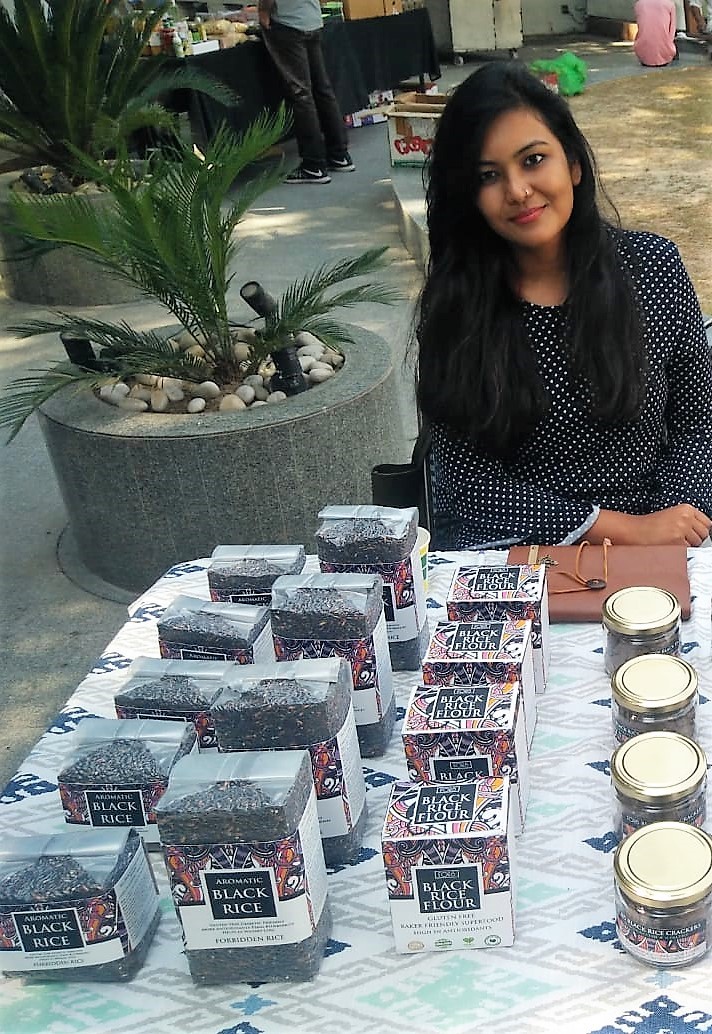
Mudita sells her wares in the virtual marketplace, which is becoming increasingly competitive with the entry of Amazon into grocery sales (previously ruled by apps like Nature’s Basket and Big Basket in India). “It’s still not bringing us the highest sales,” she explained, “but it allows us to be closer to consumers.” She has yet to directly tap into the international market, currently dealing only with exporters who are sold 20 percent of her stock.
Under MOMA, a thousand hectares in the foothill areas have been brought under black rice cultivation, areas less prone to floods. While it’s popularly believed that black rice was first adopted by the Meiteis in the valley, jhum slash-and-burn cultivation of the grain has been an age-old practice among the hill tribal communities. The remoteness of the hill tribes means there has been little exposure to their cultivation or consumption practices. But as food security expert Athing Lunghar explained to me, her ancestors from the Tangkhul Naga tribe in the East hill districts had long enjoyed black rice, especially brewed as beer (khor), and serving it alongside white rice in their meals.
“Black rice has always been an important part of festivities like Nuingaini, our seed sowing festival celebrated in February,” Athing tells me. But after mass conversion to Christianity—which placed restrictions on lifestyle habits of intoxication—daily consumption took a hit. Still, “the tonic made from black rice continues to be prescribed for various physical ailments. It’s also something we store to offer family relatives visiting from other villages.”
Athing is interested in the new wave of enthusiasm for black rice, but she is skeptical that Manipur’s black rice will make its way to domestic and foreign markets. She worries that soil quality will suffer in the race to meet demand, especially in the hilly areas where many farmers have still not been weaned away from jhum. In the hills, farmers cultivate black rice for their own consumption, so they choose the variety to cultivate according to needs of the soil type and the climatic pattern that year; “Commercial scale of farming risks the indiscriminate usage of land, and won’t allow enough time for the soil to revive its nutrients.” Moreover, farmers in Manipur will not be able to compete with the industrial scale of farmers in the North West part of India. “We should have enough for our state first instead of going for e-auctioning. Has there been research conducted on the quantity that we can produce?” Athing fears that raising global demands on a state that is yet to reach agricultural self-sufficiency could put their food security at risk.
“Discovery of our biodiversity resources is fine but by commercializing it right away, other varieties risk endangerment just because they don’t have the mass appeal. Losing this diversity means losing our culture, too,” she says. While it may be too early to predict any disastrous consequences, especially in the absence of requisite infrastructure and a smooth supply chain, the warnings are written on the wall.
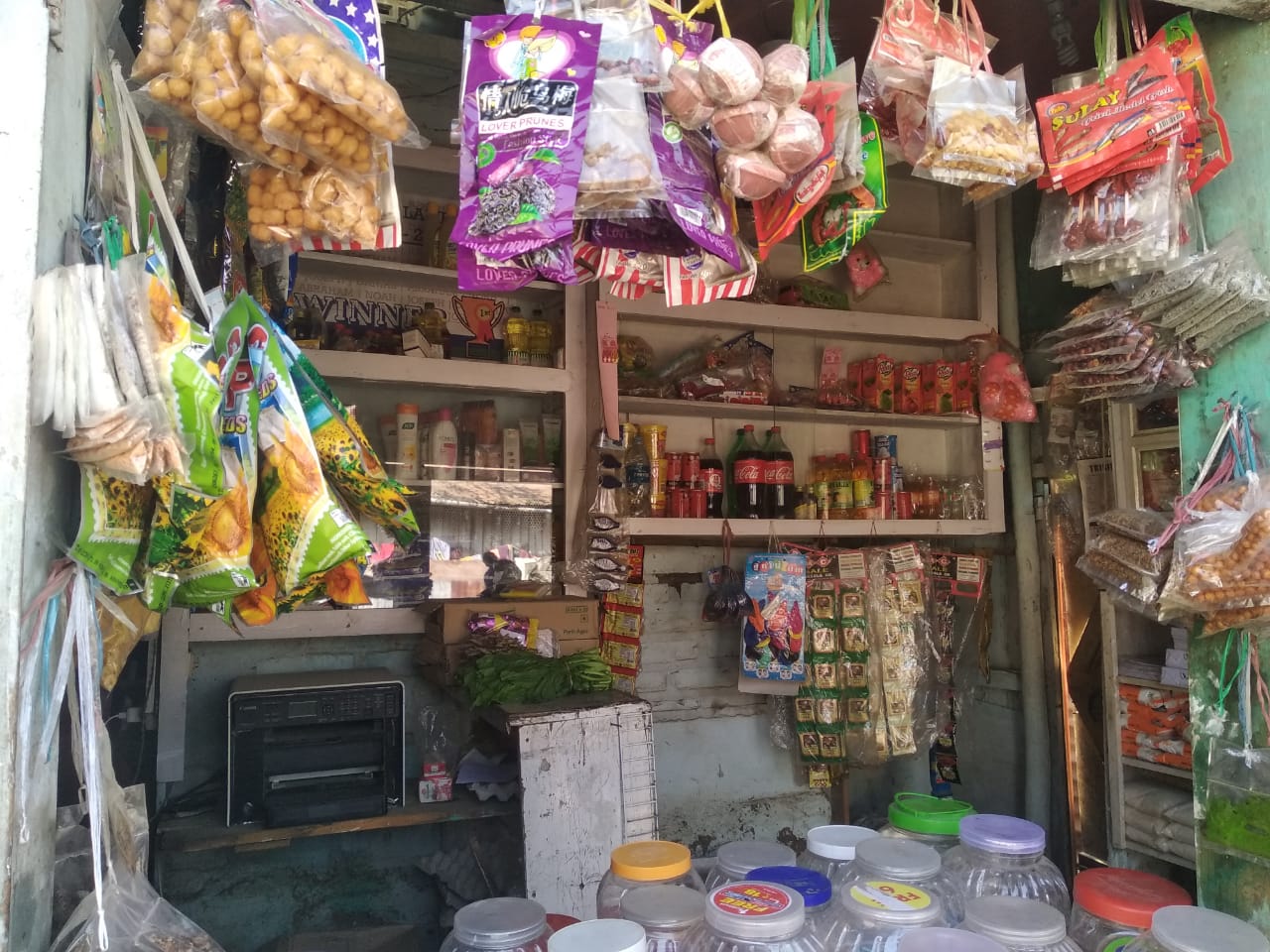
Moirang is the last Meitei stronghold in the South East wing of the state before the tribal- dominated district of Churachandpur begins. As the oldest, most culturally advanced community, the Meiteis have always experimented with their food, including making their own knick-knack sweets and savories out of rice flour, jaggery, black sesame seeds and black rice. Of course, my country cousins in the next town over binge on packaged sweet-and-sour tamarind, sunflower seeds, and preserved dried mango products imported from Burma. Given the ever-present rumors that Burmese snacks (neithei in the local Kuki dialect), with no food safety approval, have been adulterated with addictive substances—a rumor that has been doing the rounds for several years now—maybe black rice will be the game changer. In this milieu of tradition and foreign, junk food made from black rice might be the way to combine exotica and innovation.
Makepeace Sitlhou

